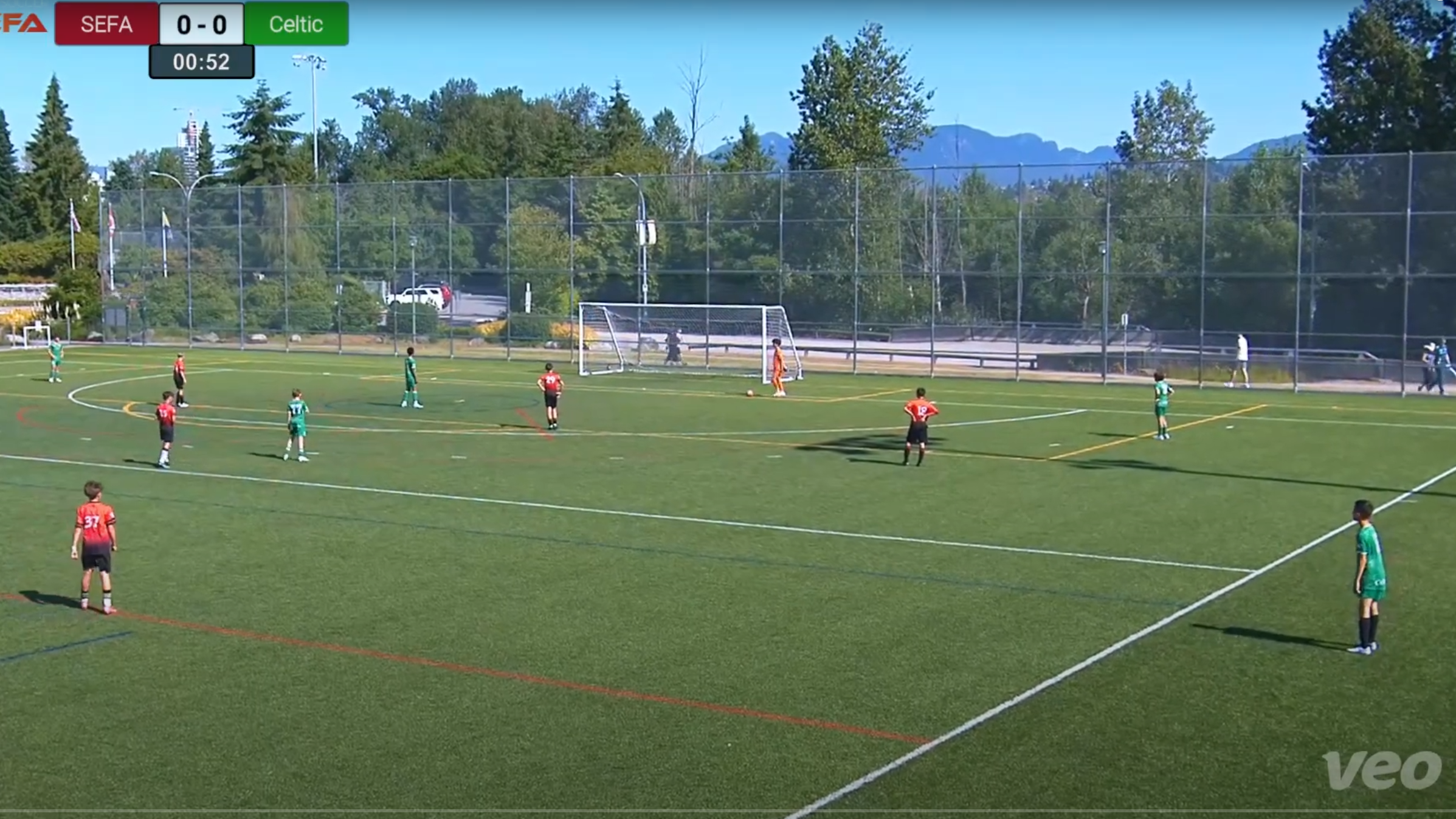Build-Up Play from the Goalkeeper: A Cornerstone of Youth Soccer Development
Picture a young goalkeeper, barely 12, standing between the posts, heart pounding as the ball rolls to their feet. The coach’s voice echoes: “Play it out, don’t just kick it!” The crowd—mostly parents and teammates—watches, some puzzled, some cheering. This moment, where the goalkeeper shifts from shot-stopper to playmaker, is more than a tactic—it’s a revolution in youth soccer development. Build-up play from the goalkeeper is now a core pillar in modern soccer, teaching kids not just to defend but to create. So, why does it matter so much for young players? Let’s dive into this game-changer, blending insights from legendary academies, famous coaches, and a touch of personal nostalgia to uncover its magic.
What Is Build-Up Play from the Goalkeeper?
First, let’s break it down. Build-up play from the goalkeeper (GK) means starting attacks from the back, with the keeper using their feet to distribute the ball to defenders or midfielders rather than launching it long. It’s about composure, vision, and precision—qualities you don’t typically associate with a kid in oversized gloves. In youth soccer, this approach isn’t just about winning games; it’s about building players who think, adapt, and thrive under pressure.
Why focus on this early? Because it shapes how kids see the game. Instead of panicking and booting the ball, they learn to stay calm, read the field, and make smart choices. It’s soccer’s version of teaching a kid to ride a bike without training wheels—scary at first, but transformative.
Why It’s a Core of Youth Development
Now, let’s get to the heart of it. Build-up play from the goalkeeper does more than start attacks; it rewires how young players think. For starters, it builds confidence. Imagine a 10-year-old keeper passing to a teammate under pressure. That moment of trust—between keeper and outfield players—creates a sense of ownership. They’re not just following orders; they’re part of the plan.
Moreover, it teaches decision-making. A 2019 study in The Journal of Sports Sciences found that structured training emphasizing ball-playing goalkeepers improved young players’ cognitive skills, like spatial awareness and quick thinking. Kids learn to scan the field, spot gaps, and choose whether to play short or long. That’s not just soccer smarts—it’s life smarts.
Finally, it fosters teamwork. When the keeper starts the play, everyone’s involved. Defenders drop back, midfielders adjust, and suddenly, the team moves as one. I remember watching my niece’s U12 team try this for the first time—clumsy passes, nervous giggles, but by the season’s end, they were pinging the ball around like mini pros. It’s a process, but it binds the team.
La Masia: The Art of Tiki-Taka from the Back
Barcelona’s La Masia is the gold standard for youth development, and build-up play from the goalkeeper is in its DNA. Their philosophy, rooted in Johan Cruyff’s vision, sees the keeper as the 11th outfield player. “The goalkeeper must be comfortable with the ball at his feet,” said former La Masia director Carles Folguera. “It’s not optional—it’s essential.” At La Masia, kids as young as 6 practice short passes in tight spaces, mimicking the “tiki-taka” style that made stars like Victor Valdés and Marc-André ter Stegen household names.
La Masia’s training drills are meticulous. Young keepers work on receiving back-passes under pressure, often in small-sided games where they’re outnumbered. A 2023 CIES Football Observatory report noted that Barcelona’s youth teams use the highest percentage of under-20 players in Europe’s top leagues, many excelling in possession-based systems. Why? Because from day one, they’re taught to build from the back. Xavi, a La Masia graduate turned coach, puts it bluntly: “If you can’t play from the goalkeeper, you can’t control the game.”
But it’s not just about passing. La Masia emphasizes mindset. “We teach them to be fearless,” said youth coach Jordi Roura. “Mistakes are part of learning.” This approach lets kids like Pau Cubarsí, who debuted at 17, shine in high-stakes games, passing out of danger with the poise of a veteran.
Santos: Flair Meets Function
Across the Atlantic, Brazil’s Santos FC takes a different spin. Known for producing flair machines like Pelé and Neymar, Santos blends creativity with structure in its youth setup. Their goalkeepers aren’t just passers—they’re artists. “In Brazil, the keeper must have samba in their feet,” said Santos youth coach João Paulo. “They start the rhythm of the attack.”
Santos’ philosophy ties build-up play to Brazil’s “jogo bonito” (beautiful game). Young keepers train in street-inspired drills—think tight spaces, quick touches, and improvisation. A 2024 ISSPF analysis highlights Santos’ focus on “soccer intelligence,” encouraging keepers to read the game and take risks. Neymar himself credited street games for his comfort on the ball, a skill Santos drills into its keepers early.
Yet, Santos balances flair with discipline. Their youth keepers practice positional play, learning to act as a pivot for defenders. “We don’t want aimless creativity,” João Paulo told ESPN. “The keeper’s pass must have purpose.” This mix—freedom within a framework—has produced keepers who can launch attacks with a flick of the foot.
Brighton: The Premier League’s Modern Blueprint
In England, Brighton & Hove Albion have become a beacon for progressive youth coaching. Under Roberto De Zerbi, their academy embraced build-up play as a core principle. A 2023 X post from @MaccaCoaching highlighted Brighton’s 7v6 build-up drills, with the goalkeeper creating a numerical advantage. “It’s high risk, high reward,” De Zerbi told The Athletic. “But if you teach kids to play through pressure young, they’ll never fear it.”
Brighton’s youth keepers train in scenarios mimicking first-team tactics—short passes to center-backs, even when pressed. Their academy emphasizes “game understanding,” per a 2024 Player Development Project report, ensuring keepers know when to play safe or bold. This paid off with players like Robert Sánchez, who moved from Brighton’s academy to Spain’s national team, thanks to his ball-playing prowess.
Brighton also invests in tech. Video analysis helps young keepers study their positioning and passing angles. “We show them clips of Ederson or Alisson,” said academy coach Shannon Ruth. “They see what’s possible.” It’s a far cry from the old-school “kick it long” days.
Famous Coaches Weigh In
The gospel of build-up play isn’t new, but its champions are vocal. Pep Guardiola, La Masia’s own, is a pioneer. “The goalkeeper is the first attacker,” he told UEFA. “If they can’t pass, the whole system breaks.” His Manchester City teams, with Ederson as the linchpin, show how a keeper’s footwork can dictate a game.
Jürgen Klopp, ex-Liverpool boss, adds passion to the mix. “A keeper who plays with courage sets the tone,” he said in a Guardian interview. “Teach kids that early, and they’ll lead.” His work with Alisson Becker turned Liverpool’s backline into an attacking weapon.
Even Brazil’s Tite, a tactical pragmatist, sees the value. “In youth, it’s about confidence,” he told FIFA.com. “A keeper who can pass gives the team belief.” His 2019 Copa América-winning side leaned on Alisson’s distribution to spark counters.
The Science Behind It
Research backs the hype. A 2021 Scandinavian Journal of Medicine & Science in Sports study found that youth programs integrating ball-playing goalkeeper drills saw a 15% boost in team possession and passing accuracy. Another, from Psychology of Sport and Exercise (2016), showed that decision-making under pressure—like a keeper facing a press—enhances cognitive flexibility in kids.
The Player Development Project adds a psychological angle. Their 2024 webinar with academy coaches stressed that build-up play builds “emotional control.” Kids learn to stay calm when a striker’s charging them down, a skill that translates beyond soccer.
The Challenges: Risks and Rewards
Of course, it’s not all smooth sailing. Teaching young keepers to play out can lead to mistakes—costly ones. A misplaced pass in a U10 game might mean a goal conceded, and parents in the stands don’t always love it. “I’ve seen coaches get flak for letting kids try this,” said my friend, a local youth coach. “But it’s how they grow.”
Injuries are another concern. Keepers diving for loose balls in tight spaces risk knocks. A 2020 Journal of Physical Education study noted higher injury rates in youth teams emphasizing high-risk build-up play. Coaches must balance ambition with safety.
Then there’s access. Academies like La Masia or Brighton have resources—top coaches, video tech. Smaller clubs? Not so much. But even there, simple drills, like passing triangles with the keeper, can work wonders.
A Personal Tale: Sarah’s Breakthrough
Let me share a story. Sarah, a 13-year-old keeper at my local club, was all nerves when her coach first pushed build-up play. “I thought I’d mess it up,” she told me later. Her first few games were shaky—passes went astray, teammates grumbled. But her coach stuck with it, running drills where Sarah had to find a defender under mock pressure. By mid-season, she was pinging balls to midfielders like she’d done it forever. Her team started winning, but more importantly, Sarah glowed with pride. “I feel like I’m actually playing now,” she said. That’s the power of this approach.
Blending Worlds: Organized and Unorganized
Here’s a thought: build-up play doesn’t have to be confined to academies. In unorganized settings—like park kickabouts—kids naturally experiment with keeper distribution. I’ve seen it in my neighborhood: a kid in goal lobs a ball to a friend, who starts a quick counter. It’s raw, but it’s the same principle. Blending this with structured coaching—like La Masia’s drills or Brighton’s analytics—creates well-rounded players.
Santos nails this balance. Their keepers practice street-style flair but within a system. “We let them play free early, then refine it,” said coach Carlos Noval. It’s why their graduates dazzle yet deliver.
The Future: Where It’s Headed
Technology’s changing the game. Academies now use AI to analyze keeper passing patterns, per a 2025 Zonal Sports report. Brighton’s ahead here, but even smaller clubs are adopting apps to track progress. Meanwhile, grassroots coaches are catching on, teaching build-up play in community leagues.
The cultural shift is global. From Brazil’s streets to England’s pitches, keepers are no longer just stoppers. They’re creators. As Tite put it, “The game starts with them now.”
Wrapping It Up: A Game-Changing Skill
So, why make build-up play from the goalkeeper a core of youth soccer development? Because it’s more than a tactic—it’s a mindset. It teaches kids to be brave, think fast, and trust their teammates. From La Masia’s tiki-taka to Santos’ samba flair to Brighton’s modern grit, the world’s best academies agree: start from the back, and you build the future.
Parents, coaches, let your keepers pass. Let them stumble, learn, and shine. Because when that 12-year-old keeper threads a ball through a press, they’re not just starting an attack—they’re growing into a leader, one pass at a time.


